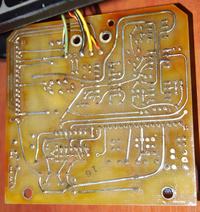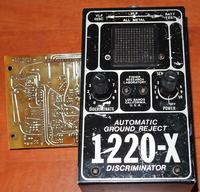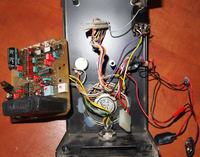Hi all. I have an old Fisher 1220x which works but not very good. I'm suspecting coil or cable problem as it gives different resistance and inductance values every time I measure. Any chance someone knows what those values should be? Thanks.
Announcement
Collapse
No announcement yet.
Fisher 1220x coil values
Collapse
X
-
coil_data.txtI have not sure info Fisher 1220x adaptiving '1200 series coils' or something another and specific... Coils' Data Base is mainly grounded on Carl Moreland data...
-
-
-
-
Yes, my 1220 has this huge component inside, roughly 2" width X 1 and a half inches high. Looks as though it is an IC judging by the schematic. Is it an op amp which is now obselete. Originally made by Texas Instruments part 3606 BG. I meant that I've never seen it in any other detector or anywhere. My 1220 had a piece of wood inside of it as well, I remember. I was the first one in my club to get one of these new "motion" machines and I cleaned out the site of hammered coins the first time I used it. By the second week though, loads of members had bought similar, so my advantage was short lived.
I was the first one in my club to get one of these new "motion" machines and I cleaned out the site of hammered coins the first time I used it. By the second week though, loads of members had bought similar, so my advantage was short lived.
Comment
-
The "huge component" is the front end board, which contained what we regarded at that time as trade secrets so we potted it in epoxy to keep it from prying eyes. It was eventually dissected anyhow and the schematic published, probably here.
As I recall the inductance of both the transmitter and the receiver circuits was 6.3 mH and the resonating capacitance for both was 0.22 uF. As I recall the caps were in the searchcoil but I may be mistaken about that. The caps have to be matched to within 1%.
The 1260, 1220, 1210, and as I recall the 1212 all used the same searchcoil, difference being that the cheepies were hardwired, no searchcoil cable connector.
Comment
-
Hey cool Dave J. that you worked personally on the Fisher, I still have my 1266x.
> I have an old Fisher 1220x which works but not very good.
Think it helps if you replace the old electrolyte condensers with fresh ones.
Especially those with the yellowish shine nearby the large transistor or what it is looks bad.
Thx for the pix.
Comment








Comment